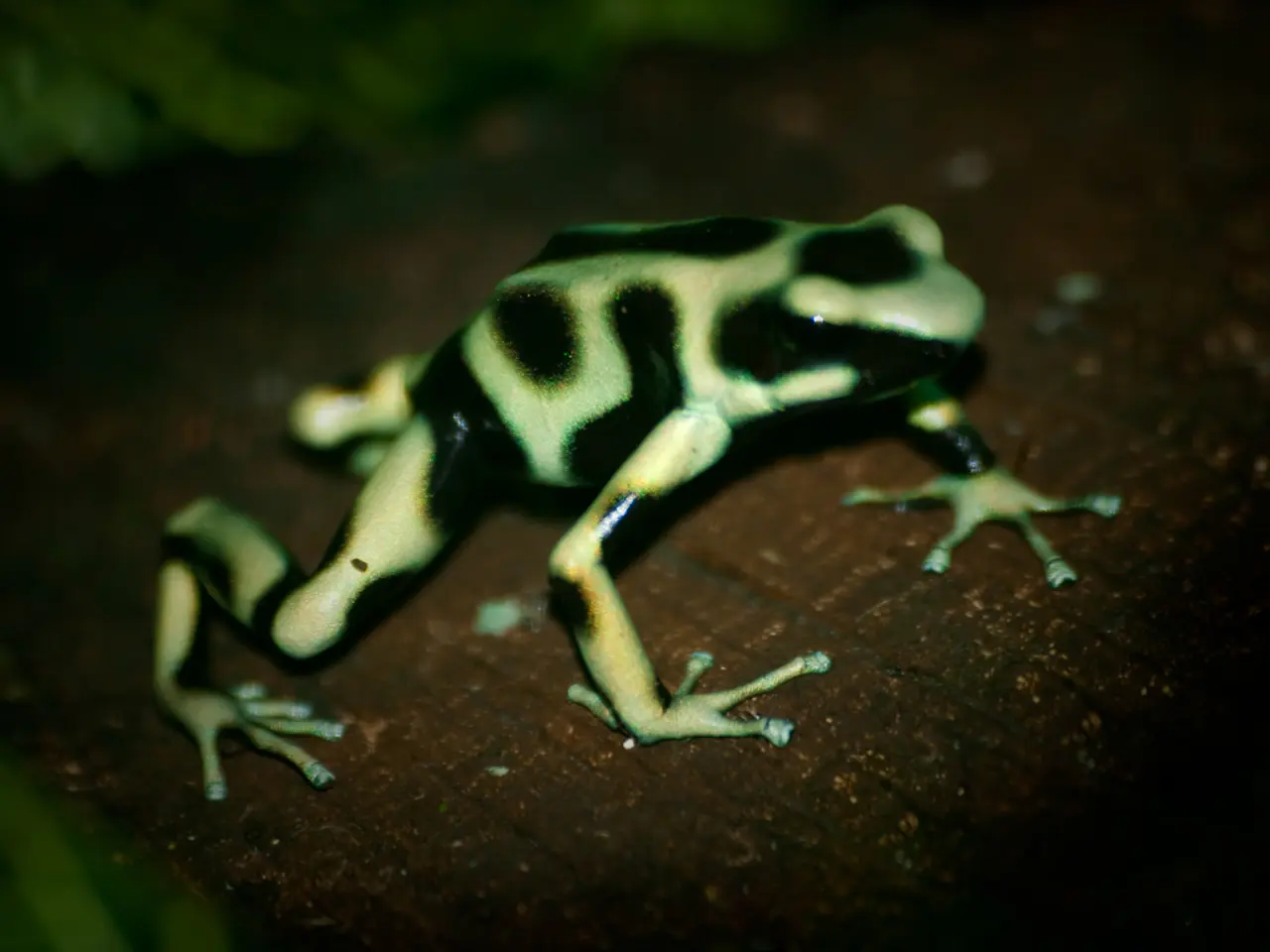Successful Birth of Rare Froglets Following Extraordinary 7000-Mile Relocation Effort
In a heartening development, London Zoo has successfully bred over 33 Darwin's froglets, offering a beacon of hope for an endangered species threatened by the deadly chytrid fungus. This significant milestone marks a critical step forward in the fight to save the Darwin's frog.
The story begins in Parque Tantauco, southern Chile, where researchers confirmed the presence of the chytrid fungus in 2023. This lethal fungus had already caused a 90% decline in Darwin's frog populations within a year, prompting conservationists to take immediate action.
A dedicated team of conservationists embarked on a 7,000-mile rescue mission, managing to capture 53 Darwin's frogs. Recognising the London Zoo's commitment to conservation, they offered a refuge for these endangered creatures.
Under the dedicated care of London Zoo's conservationists, the 33 healthy froglets were born, a testament to the impact of captive breeding programs and ex-situ conservation efforts. The froglets were remarkably incubated in the vocal sacs of 11 male frogs, a fascinating aspect of their unique reproductive biology.
Ben Tapley, curator of amphibians at London Zoo, expressed his elation at the successful breeding of the froglets. He highlighted the collaborative efforts of conservationists and the essential role played by accredited zoos in conservation initiatives.
The success story of the Darwin's froglets is a testament to the importance of captive breeding, disease management, behavioural research, and reintroduction programs. These strategies are crucial for protecting amphibian species facing habitat loss, disease, and environmental pressures.
Other accredited zoos also contribute to the conservation of endangered amphibians like the Darwin's frog. They engage in similar conservation actions, such as breeding critically endangered frogs and reintroducing them into protected habitats. Cooperations between zoos have led to the reintroduction of thousands of captive-bred frogs into the wild, helping establish self-sustaining populations.
The unwavering commitment of conservationists to protect endangered species like the Darwin's frogs is critical in preserving biodiversity and ensuring a brighter future for all living beings. This multi-institution approach is indeed a poignant symbol of hope and resilience in the face of adversity.
As for the Darwin's froglets, they are named after Charles Darwin, reflecting the enduring connection between science, exploration, and conservation. The froglets are thriving under the dedicated care of London Zoo's conservationists, bringing us one step closer to securing their future in the wild.
References:
[1] London Zoo (2021). Amphibian Conservation. Retrieved from https://www.zsl.org/conservation/our-work/amphibians
[2] Amphibian Ark (2020). Zoo and Aquarium Program. Retrieved from https://amphibianark.org/programs/zoo-and-aquarium-program/
[3] Zoo Conservation Lab (2020). Darwin's Frog. Retrieved from https://www.zoolab.org/conservation/darwins-frog/
Health and wellness measures, such as the preventative care provided to the Darwin's froglets at London Zoo, play a significant role in the conservation of endangered species. The collaboration between environmental science researchers and accredited zoos, like London Zoo, helps advance our understanding of amphibian species like the Darwin's frog and develop strategies for protecting them.




